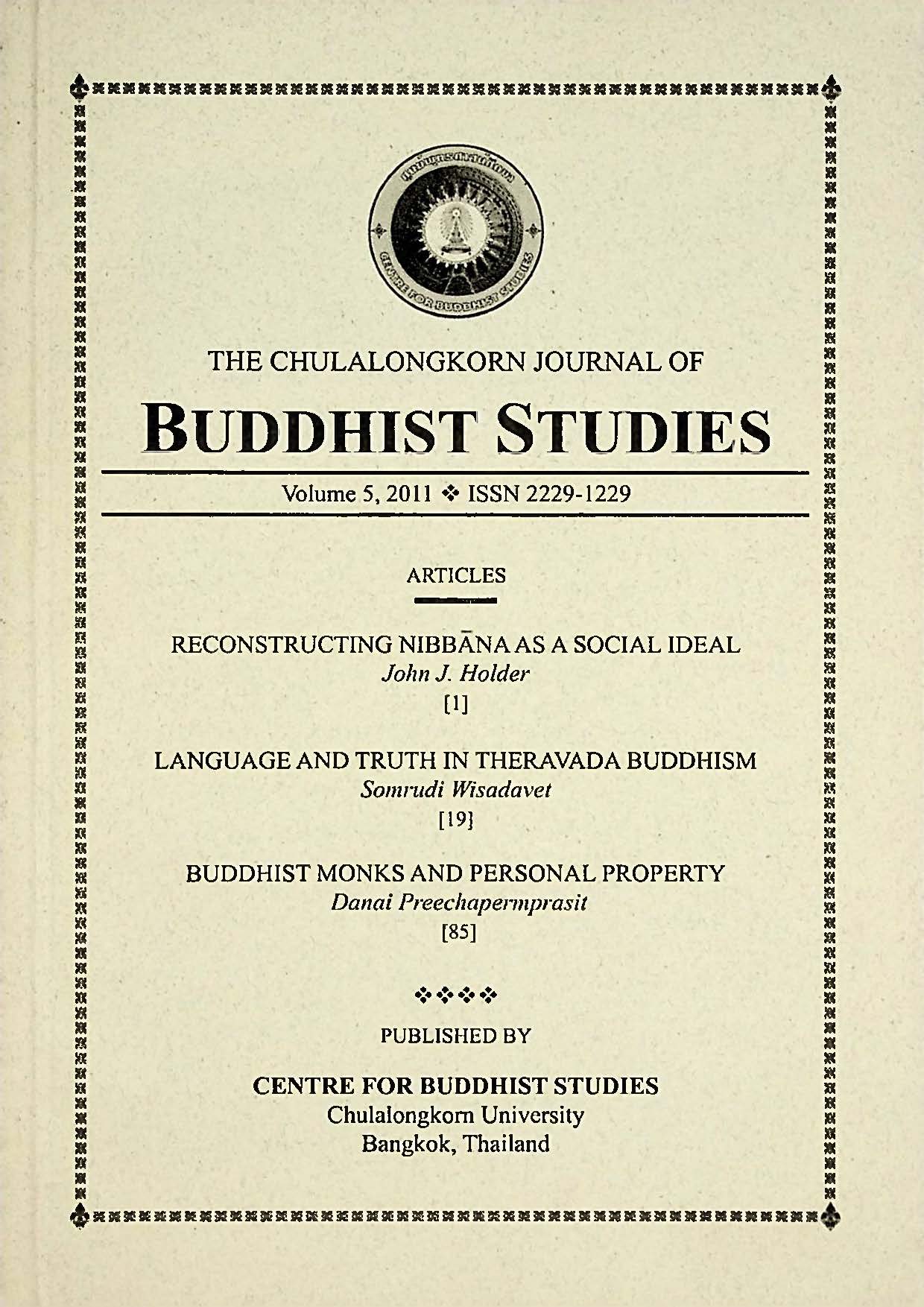RECONSTRUCTING NIBBANA AS A SOCIAL IDEAL
Abstract
Introduction: The Social Context of Buddhist Ideals
Many years ago I was struck by the following passage written by the late Venerable Walpola Rahula:
Those who think that Buddhism is interested only in lofty ideals, high moral and philosophical thought, and that it ignores the social and economic welfare of people, arc wrong. The Buddha was interested in the happiness of men,...The Buddha did not take life out of the context of its social and economic background; he looked at it as a whole, in all its social, economic and political aspects.
References
Digha Nikaya, 3 vols., T.W. Rhys Davids and J.E. Carpenter, eds. (London: Pali Text Society, 1890-1911). Translated as Dialogues of the Buddha, T.W. Rhys Davids and C.A.F. Rhys Davids (London: Pali Text Society, 1899-1921).
Itivuttaka, E. Windish, ed. (London: Pali Text Society, 1948).
Majjhima Nikaya, 3 vols., V. Trcnckner and R. Chalmers, eds. (London: Pali Text Society, 1887-1901). Translated as Middle Length Sayings, I.B. Homer (London: Pali Text Society, 1954-1959).
Samyutta Nikaya, 6 vols., L. Feer, ed. (London: Pali Text Society, 1884- 1904). Translated as The Book of the Kindred Sayings, C.A.F. Rhys Davids and F.L. Woodward (London: Pali Text Society, 1917-1930).
Sutta Nipata, H. Smith, ed. (London: Pali Text Society, 1913).
Udana, P. Steinthal, ed. (London: Pali Text Society, 1948).
Vinaya Pimakam vol. I., Hermann Oldenberg, ed. (London: Pali Text Society, 1997).
Bodhi, Bhikkhu. The Middle Length Discourses of the Buddha: A New Translation of the Majjhima Nikaya (Kandy, Sri Lanka: Buddhist Publication Society, 1995).
Chakravarti, Uma. The Social Dimensions of Early Buddhism (Oxford: Oxford University Press, 1987).
Collins, Steven. Seljless Persons (Cambridge: Cambridge University Press, 1982).
Collins, Steven. Nirvana and Other Buddhist Felicities (Cambridge: Cambridge University Press, 1998).
Gombrich, Richard. How Buddhism Began: The Conditioned Genesis of the Early Teachings (London: Athlone Press, 1996).
Gombrich, Richard. What the Buddha Thought (London: Equinox, 2009).
Premasiri, P.D. “The Social Relevance of the Nibbana Ideal” in Kalupahana, David, ed. Buddhist Thought and Ritual (New York: Paragon House, 1991).
Rahula, Walpola. What the Buddha Taught, second edition (London: Gordon Fraser, 1985).
Tilakaratne, Asanga. Nirvana and Ineffability (Colombo, Sri Lanka: The Postgraduate Institute of Pali and Buddhist Studies, 1993).
Walshe, Maurice. The Long Discourses ofthe Buddha: A Translation of the DTgha Nikaya (Kandy, Sri Lanka: Buddhist Publication Society, 1996).
Wijesekera, O.H. de A. Buddhism and Society (Colombo, Sri Lanka: Bauddha Sahitya Sabha, 1951).







